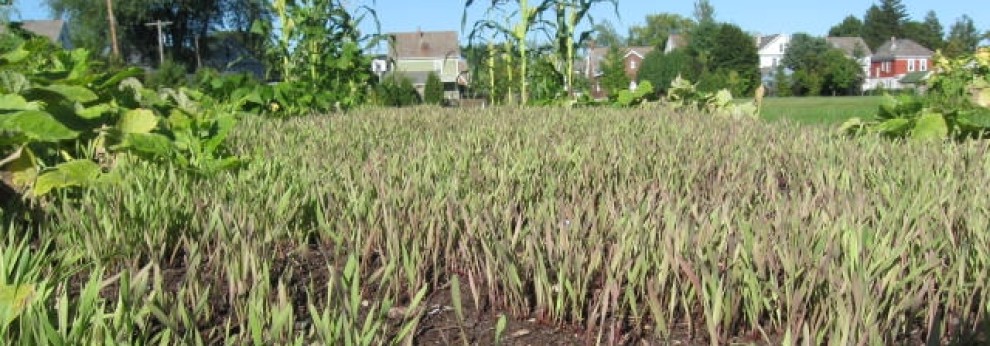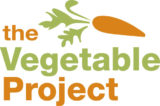 “We believe that nature makes kids healthier, happier and smarter.”
“We believe that nature makes kids healthier, happier and smarter.”
The words appear on page after page at the website of the Children & Nature Network, a national advocate for getting children out into nature. And though that does capture the essence of the organization’s driving purpose,the organization adds eloquently a rotation of “More green, less screen,” “There’s no app for this,” “Kids won’t remember their best day of YouTube” and “Every child deserves to see the stars.”
We at the Vegetable Project would kinda have to agree. Indeed, our mission, written when we formalized a volunteer initiative in 2015 as a tax-exempt nonprofit corporation, includes “harnessing the power of exposure to nature.”
 And we might add that institutions with significant roles in shepherding kids along the path to independent adulthood are leaving some extraordinary opportunity on the table if they are not at least thinking about the Children & Nature Network’s excellent framing of an issue. Or contemplating some controlled experimentation to test what perhaps should be seen as a hypothesis. Or poking at some of the voluminous scholarly research that the C&NN research library. Or glancing at the Wikipedia entry for Richard Louv.
And we might add that institutions with significant roles in shepherding kids along the path to independent adulthood are leaving some extraordinary opportunity on the table if they are not at least thinking about the Children & Nature Network’s excellent framing of an issue. Or contemplating some controlled experimentation to test what perhaps should be seen as a hypothesis. Or poking at some of the voluminous scholarly research that the C&NN research library. Or glancing at the Wikipedia entry for Richard Louv.
Wait, Richard who?
A co-founder of the Children & Nature Network, Louv’s 2005 book “Last Child in the Woods” introduced the term “nature deficit disorder” to the world. And schools, whether they know it or not, are extraordinarily challenged by this modern-age plague (though not a formal medical diagnosis) and are equally well-positioned to address it – by building some curriculum and instruction around exposure to nature – such as with classes occasionally convening in the schoolyard.
 At a time when reported incidence of child and adolescent anxiety and depression is soaring, when the American public is alarmed by myriad measures of academic performance, when only about half of New York’s third through eighth graders are proficient in reading and math and when the measurements and outcomes are even more concerning for disadvantaged children, we owe it to kids to think harder about their health and happiness. And we need to ask ourselves whether it’s even possible to teach everyone algebra without first giving wellbeing more attention.
At a time when reported incidence of child and adolescent anxiety and depression is soaring, when the American public is alarmed by myriad measures of academic performance, when only about half of New York’s third through eighth graders are proficient in reading and math and when the measurements and outcomes are even more concerning for disadvantaged children, we owe it to kids to think harder about their health and happiness. And we need to ask ourselves whether it’s even possible to teach everyone algebra without first giving wellbeing more attention.
Let’s put this in practical terms, however:
- School field trips that require expensive transportation and parent permissions are fine. But schoolyards and surrounding neighborhoods are way more accessible. Where there is a will to put them to use for teaching and learning there is a way.
- More than permission to take classes outside once in a while, teachers need encouragement from their building principals, their subject supervisors and the big-picture thinkers in state education departments and college teacher preparation programs.
 The power of exposure to nature is not limited to certain school subjects. Art class and social studies class makes as much sense outdoors as science classes or agriculture programs.
The power of exposure to nature is not limited to certain school subjects. Art class and social studies class makes as much sense outdoors as science classes or agriculture programs.- Nature stimulates and calms at the same time. That’s a pretty valuable combination.
- The human species spent the vast preponderance of its development outdoors. The time since the electric light bulb started bringing more of everyday life indoors is a blink of an eye in terms how evolution has prepared us to thrive.
- The difference that schools can make by embracing some teaching and learning in nature will be even greater for disadvantaged kids than kids growing up with greater economic means and stability at home, given huge every day differences in safety of neighborhoods, presence and comfort of backyards, access to nearby nature and likelihood of taking family vacations to the mountains or seashores or other places where wealthier families re-charge their batteries.
The Vegetable Project didn’t think of the words, “we believe that nature makes kids healthier, happier and smarter,” but certainly is energized by them.
–Bill Stoneman



